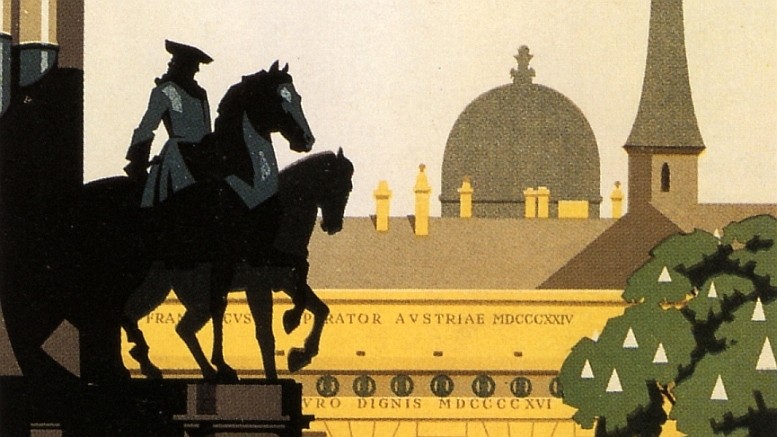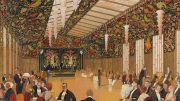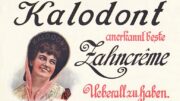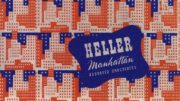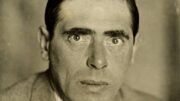
Fig. 1. Self portrait, 1928 in Wiener Magazin / Fig. 2. Advertisement for the Kosel Plakate company
As a rule, Hermann Kosel (1896–1983)[1] (Fig. 1) is regarded and appreciated in commemorative exhibitions as a poster and commercial artist who created advertisements for things such as razor blades, paint, shaving soap, Humanic shoes, tea, the tourist trade and rubber heels.[2] On the other hand, a full-page ad from the late 1920s for the „Kosel Plakate“ company, located on Aspernplatz 1 in Vienna’s First District, would seem to show that the scope of his artistic work was much wider: posters, advertisements, flyers, catalogues, trademark symbols, packages, labels, stationery, calendars, book covers, illustrations, diplomas, fair stands and lighted advertisements.[3] (Fig. 2.) The ad appeared in regular intervals in a new magazine which came out on the market in November 1927 and which was published by the Alexander & Co. firm in Vienna. The monthly magazine – Wiener Magazin – was richly illustrated and featured among other things photographs of stars and starlets, of local high society from renowned studios such as d’Ora, Manassé and Franz Löwy. This “self-ad” was not purely coincidental, for Kosel was, along with the artists Peter Eng (1892–1939), Josef Danilowatz (1877–1945), Rudolf Matouschek (1901–?) and Erwin Tintner (1885–1957), a member of the artistic staff from the very beginning and something akin to an “artist in chief” of the magazine until February 1934.

Fig. 3. Illustration by Kosel Gibson, 1927 / Fig. 4. Ad for the Reschovsky shoe store, 1930
In the first two issues of the magazine his works are signed „Illustriert von Kosel Gibson“ (Fig. 3.)[4], but from February 1928 on we find a reference to „Sämtliche gezeichnete Titel von Kosel“ (All drawn titles by Kosel) in the table of contents. The fact that Kosel worked for so many years for the Wiener Magazin has, apart from a brief reference in Friedrich C. Heller’s standard-work (Die bunte Welt. Handbuch zum künstlerisch illustrierten Kinderbuch in Wien 1890–1938, p. 361) hitherto not been mentioned in the scholarly literature on Kosel, but anyone wanting to compile a comprehensive catalogue of his works beyond the well-known posters for the tourism industry will definitely have to consult the monthly magazine. During this stint with the Wiener Magazin Kosel was also active as a commercial artist, designing a number of ads – which appeared almost on a monthly basis – for companies in Vienna such as the B. Reschovsky shoe store on the Graben in central Vienna (Fig. 4.)[5] and the renowned photographer Manassé on the Kärntnerring.[6] (Fig. 5.)

Fig. 5. Ad for the Photo Studio Manassé, 1930 / Fig. 6. Cover by Rudolf Geyer
Kosel‘s Work as a Book Designer
Obviously the above-mentioned self-ad is not the only reason we know that Kosel designed book covers and dust jackets, however there has been little or no research up till now into his work as a book designer. He had contact by 1921 at the latest with the newly established publishing company Rikola Verlag[7] and its founder Richard Kola (1872–1939) for it was in this year that he, together with his colleague Rolf Frey („Kosel-Frey“), designed the cover[8] for the novel Die gelbe Fahne by Leo Fischmann, a lawyer and legal advisor to the German-language writers guild (Schutzverband deutscher Schriftsteller in Österreich). Two years later Kosel once again joined forces with Frey to create numerous advertisements for Rikola (often using red and black as the dominant colours) which have been reproduced in exhibition catalogues and elsewhere up to the present day.[9] One of the motifs is today the trademark of a bookseller in Vienna, namely Buchkontor in the 15th district (www.buchkontor.at). As it turns out, Kosel also designed the cover of a children’s book for Rikola in 1924, namely Was der Riegler-Ferdl erlebte. Wiener Jugendbuch by Friedrich Kuthmayer. Kosel’s regular and extensive work as a book designer for another publishing company in Vienna has been completely overlooked until now. Reference is to the Fiba-Verlag, founded in 1926, and up until roughly 1937 Kosel was responsible for the design of a good 20% of the publisher’s production. For that reason, we want to take a brief look at the history and development of the Fiba-Verlag.
The History of the Fiba-Verlag, Vienna–Leipzig
The Fiba-Verlag takes its name from the first two letters of the surnames of the two founders, namely the bookseller Ida Fischer (1879, Rudolfswert – 7 January, 1943, Auschwitz) and the State Opera singer Olga Bauer-Pilecka (14 February, 1887, Rawa-Ruska, Galicia – 2 July, 1941, Vienna). The company, whose first official name was „Fiba-Verlag Ida Fischer & Co., Buch-, Kunst- und Musikalienhandlung“ – because Fischer had a permit to operate a publishing company and Bauer did not – was founded on 23 September, 1926, and was entered into the commercial register in Vienna on 4 February, 1927. However, the working relationship of the two co-founders and co-owners did not last for long and they went their separate ways at the beginning of 1928.[10] From this point on, the company officially became known as „Fiba-Verlag O. Bauer“ and had a permit as a publisher and bookseller at Gumpendorferstraße 14 in Vienna’s 6th district. In the same year (1 September, 1928) Bauer retired as an opera singer and devoted herself exclusively to running the publishing company. The company’s first publication appeared (according to the imprint) in 1927, however, the book seems to have been on the market as early as November 1926.[11] It was written by the publisher’s spouse, the gynaecologist Bernhard A. Bauer (1882–1951), and was entitled Komödiantin – Dirne? Der Künstlerin Leben und Lieben im Lichte der Wahrheit (cover designed by Rudolf Geyer). (See Fig. 6) We can assume that the book was intended to be published by the Rikola-Verlag in 1926, as Bauer had previously published another work there in 1923, Wie bist du, Weib?, and that production was more or less completed at a time when the Rikola-Verlag was, however, already in financial disarray. It would not have been difficult to change the title page to Fiba-Verlag and proceed with the binding.

Fig. 7. Ad for the Venedig guide-book / Fig. 8. Special flyer designed by Kosel for the Bummel-Bücher-series
By 1938 – and the book Dein Motorrad. In Bild, Frage und Antwort by Oskar Schmilauer, which appeared in February of that year, was likely the final new release – the overall production stood at a little more than 60 works and comprised a colourful mixture of themes, topics and subjects, indeed everything from fiction, manuals, guidebooks and non-fiction to travel guides, books on motor vehicles and aviation, card games (esp. bridge) and (from 1933) books pertaining to Palestine, whether studies on life in Palestine or travel guides. In the works commissioned by the Fiba-Verlag Kosel was by no means restricted to a given production field, moreover he designed, as we shall be seeing, book covers and dust jackets for seemingly non-mainstream literary works as well as for books about cars and motorbikes and books about Palestine.

Fig. 9. Internationale Automobil- und Motorradausstellung poster / Fig. 8. Special flyer designed by Kosel for the Bummel-Bücher-series
As revealed by the correspondence in the 1930s between the publishing company and the local book trade association, the Fiba-Verlag was, at times, in dire financial straits, partly because of bad debts resulting from Bauer’s mail order book sales in Poland and Romania, partly because some publications remained “shelf-warmers”. Nevertheless, the publisher spared no expense when it came to book designing and produced a significant number of works with cloth binding and stamped gold.

Fig. 11. Fiba Ramble Books, Venice, 1931 / Fig. 12. Cover by Alfred Keller, 1932.
After the annexation of Austria by Hitler Germany in March 1938, the fate of the publishing company hung in the balance because the publication of the numerous „Jew-friendly“ books, among them Alex Bein’s standard-work on Theodor Herzl, and the fact that a number of the people who had published their works in the Fiba-Verlag were Jews did not seem to be conducive to continuing operation of the company. Be that as it may, it appears that the Fiba-Verlag was able or allowed to sell off its inventory. The Judaica were distributed by the Jüdischer Kulturbund. Because she was considered by the Nazi authorities to have Jewish relations, the publisher Olga Bauer was compelled – as were all Jews in the country with a given worth – to make her assets known to the authorities as per 27 April, 1938. According to Bauer, after deducting the operating liabilities, the publishing company had little or no worth. This, in turn, may have contributed to the impression the company had no raison d’être. The Fiba-Verlag O. Bauer company was erased from the register of the Commercial Court in Vienna on 30 December, 1938.
Let us now take a closer look at the various categories of books for which Hermann Kosel designed book covers and dust jackets.

Fig. 13. Ad for the book on Greece / Fig. 14. Palästina wie es wirklich ist, cover 1933.

Fig. 15. Palästina wie es wirklich ist, dust jacket, 1933 / Fig. 16. Ad for Palästina wie es wirklich ist.
Fiba-Bummel-Bücher (1931–1935) and Fiba-Ramble-Books: „a new type of travel guide“
It was in 1931 that the first volume of an ambitious series of travel guides hit the market under the title Fiba-Bummel-Bücher. It was written by the Viennese journalist and travel writer Theodor F. Meisels (1899–1963) and entitled Venedig [Venice] (See Fig. 7). In a special flyer advertising the series and designed by Hermann Kosel (See Fig. 8) there is reference to the fact that it was „a novelty on the book market” and not only a travel guide, but also “an indispensable travel companion”. What is interesting about this flyer from an artistic point of view is the fact that Kosel makes use of one of his favourite motifs, namely a modern limousine travelling up an incline, which he used on repeated occasion since 1929. [12] (See Fig. 9) This would suggest that the automobile had become an accepted means of transportation for well-to-do tourists (Fig. 10) .

Fig. 17. Vienna Tourism Promotion / Fig. 18. Dust jacket 1934
The Fiba publishing company will have been aware of the highly competitive travel guide market of the day when it launched the new series. This led to the claim in a Fiba advertisement which read: “This new type of travel guide is an excellent addition to Baedeker.” Reference was to the ubiquitous Baedeker guides, but this was not the only allusion to them as the book covers designed by Kosel were in most cases red, that is Baedeker’s “trade-mark”. Kosel not only designed the covers for four of the five volumes which were to appear up until 1935, he was also responsible for the dust jackets. Concurrent with the publication of the Venice guide book a special advertising leaflet drew attention to “further volumes in the series of entertaining travel guides” as being “in preparation”. The volumes mentioned included Milan and the lakes of northern Italy, the Italian and French Riviera, Travel on the Rhine, Florence, Rome and the Bohemian Baths. At the same time, the publisher informed potential buyers that all the travel guides would also appear in English editions. For reasons unknown, the only Fiba-travel guide to appear in English was Meisel’s Venice (1931) (Fig. 11). The cover was designed by Kosel. In other words, none of the other advertised publications saw the light of day. It is also not known why the “Bummel-Bücher” series ceased publication after the fifth volume in 1935.[13] The second volume, Erich Pistor’s Griechenland und der Nahe Osten (Greece and the Middle East), appeared in 1932. The cover was designed by Prof. Alfred Keller, who also provided numerous text illustrations (Fig. 12; Fig. 13). In the following year the Fiba-Verlag published Palästina wie es wirklich ist [Palestine like it really is] by Hugo Herrmann (1887–1940) as the third volume (Fig. 14; Fig. 15; Fig. 16). It is interesting here to compare the style of Kosel’s design of the dust jacket (sun, palm trees and synagogue) of the Palestine book with the basic tone of violet with his Vienna tourism poster of 1928. In his „Kommen Sie nach Wien!“-poster („Come to Vienna!“) he employs a type of montage technique to gather all the sites of the city in one frame (the monument to Prince Eugene, St. Charles Church, Vienna Town Hall, St. Stephan’s Cathedral, the Gloriette in Schönbrunn) [14] (See Fig. 17).

Fig. 19. Ad for the Adriatic Sea guidebook / Fig. 20. Cover by Kosel, 1934
A further travel guide by Theodor F. Meisels – Südslavische Adria (Fig. 18; Fig. 19; Fig. 20) – appeared in 1934 as the 4th volume in the series. We can see in the illustration that the publisher chose “Baedeker-red” for the cover. In the following year, 1935, Fiba published a guide to Salzburg by Bernhard Paumgartner. The title: Salzburg. Mit 84 Bildern nach Originalfotos von Maximilian Karnitschnigg und einem Stadtplan. This, the final volume in the series to appear, shows the increasing use of photographs (as opposed to sketches and drawings) in the travel guides. From the point of view of style, Kosel’s dust jacket is reminiscent of the tourism posters he created in the early 1930s. A favourite motif was the Südbahnhotel/Semmering (Fig. 21). In the case at hand, Kosel chose as his motif the fountain and the bell tower on the Residenz Square in Salzburg.

Fig. 21. Dust jacket of the Salzburg travel guide / Fig. 22. Cover by Hermann Kosel, 1933
Books about Palestine
The book Palästina wie es wirklich ist, published in 1933 as one of the „Bummel-Bücher“, was by no means Kosel’s only contact with Jewish themes or Palestine in his work for the Fiba-Verlag, for it was in this year (the year Hitler rose to power in Germany) that the publisher began to produce more and more books on these subjects. In light of the fact there were really only two other publishers in Vienna who were active in this field and who published Zionist writings, the engagement by the Fiba-Verlag is highly noteworthy. The reason for the initiative to publish books which, at this point in time, could no longer be sold on the German market and thus frequently only had “Vienna” in their impressum, as opposed to the customary “Vienna-Leipzig”, is likely to be found in Olga Bauer’s family background. The important publications on Palestine include two works on the founder of Zionism, Theodor Herzl[15], and works about the Jewish labour movement in Palestine. [16] In 1933, Kosel was commissioned to design the cover for the book Wir bauen Palästina.[17] (Fig. 22; Fig. 23)

Fig. 23. Title page of Wir bauen Palästina, 1933 / Fig. 24. Cover 1936
Included among the Fiba-Verlag books which mention Vienna only on the title page are a Die Stadt Israels, a novel which appeared in 1936 and was written by someone by the name of Paul Pourtant – an obvious pseudonym. There is no mention in the book who was responsible for the cover, however there are a number of characteristic traits which would suggest Kosel was the designer (Fig. 24).
Fiction

Fig. 25. Cover of Ziak‘s Wien. Heldenroman einer Stadt, 1931 / Fig. 26. Cover of Georg Kantor‘s Tristan Vermandois, 1932

Fig. 27. Cover of Otto West‘s Vera Mens, 1931 / Fig. 28. Dust jacket of Verirrt in den Zeiten, 1933 ,
The Fiba-Verlag also commissioned Hermann Kosel to design book covers and dust jackets for literary works. These include Karl Ziak‘s novel Wien. Heldenroman einer Stadt (1931) (Fig. 25), Tristan Vermandois. Das Ende einer großen Liebe (1932) by Georg Kantor (Fig. 26), Vera Mens. Ein Mädel in Wien (1931) by Otto West (Fig. 27), Verirrt in den Zeiten. Roman (1933) by Oswald Levett (Fig.. 28; Abb. 29), Streiflichter in’s Dunkel. Probleme des Unterbewußtseins in erzählender Form by R.L. von Wiesenau (1932), Liebe am Kreuz. Eine Geschichte kranker Seelen (1932) by Robert Heinz Brigg (Fig. 30), and Die Ehen des Doktor Wank. Roman (1933) by Kurt Sonnenfeld (Fig. 31)

Fig. 29. Ad for Verirrt in den Zeiten / Fig. 30. Dust jacket of Liebe am Kreuz, 1932
In 1932 and again in 1935, the Fiba-Verlag published two successful cookbooks written by Stephanie Mathias. The cover of the book Après Souper. 333 Rezepte für kleines Backwerk, Cremes, Eis, Käsespeisen, Kompotte, Jams, Sulzen, eingemachte Früchte, Speisen zum Tee, Drinks (1932) was by Hermann Kosel (Abb. 32). The book illustration was provided by A.F. Seligmann.

Fig. 31. Dust jacket of Die Ehen des Doktor Wank, 1933 / Abb. 32. Cover by Kosel, 1932
Automobile Books
With the growing popularity of the automobile in the 1920s, the Fiba-Verlag would seem to have discovered a market niche by publishing very successful handbooks for car drivers and motorcycle riders. Several publications experienced numerous printings. Two such books were among the first publications in 1927, both of them were written by Othmar Ilming, namely Ratgeber für Motorradfahren. Das Motorrad in Frage und Antwort and Ratgeber für Automobilisten. Das Auto in Frage und Antwort. The Ratgeber für Automobilisten (1927) was a new release by the Fiba-Verlag, but in actual fact it was the 4th, revised and expanded edition of a work which had first appeared in the publishing house of the Buchhandlung Beck in Vienna. By 1932, the handbook had gone into its ninth printing after being completely revised and expanded (39th to 43rd thousand). This time, however, it was published by the Ida Fischer Verlag. After the ninth printing, Ilming changed publishers and took his guidebook and other works to the Verlag Ed. Hölzel (where the Ratgeber für Automobilisten then appeared in a new edition). Just as a matter of interest, the Austrian Automobile Club, ÖAMTC, published a revised edition of Ilming’s book after World War Two.

Fig. 35. Cover by Kosel, 1937 / Fig. 34. Ad for the book Das Auto von A – Z in Bild

Fig. 33. Cover of Part 3 / Fig. 36. Kosel‘s ad for Verlag Ed. Hölzel
Possibly because the Fiba-Verlag no longer had the popular books by Ilming in its programme, they enlisted two experts in the field to write similar books for car owners. Das Auto von A – Z in Bild, Frage und Antwort by Ing. F. Neumann and Ing. G. Tokarski. (Fig. 35) appeared on the market for the first time in 1932. As is evidenced by a company ad in May 1932, Kosel again used the motif of a car which he had first used to design posters for the International Automobile and Motorcycle Exhibition in the „Rotunde“ in Vienna in the years 1930, 1931 and 1932 (See Fig. 34 and Fig. 9) The book, co-authored by Neumann and Tokarski, was augmented up till 1937 by two further parts and Kosel was responsible in each case for the covers and dust jackets. While we are on the subject of transportation and although the design in this case was not by Hermann Kosel, it is worth mentioning here that the Fiba-Verlag was also involved in Europe’s and Austria’s budding aviation industry and – from 1929 – published flight plans for all of Europe.[18] If we take the revised second edition of Das Auto von A – Z in Bild, Frage und Antwort. 1. Teil. Der Kraftwagen and the third part (Der Kraftfahrdienst in der bewaffneten Macht) (Fig. 33), both of which appeared in 1937, into account, then we can say that Kosel did work for the Fiba-Verlag until the year 1937. In the meantime, as for example in the year 1932, he did take time out to do a car design for the publisher Ed. Hölzel in Vienna: Hölzel’s Strassenkarte für Österreich, which was also the Austrian Touring Club’s official map of Austria (Fig. 36 ). Although Kosel was by no means the only artist commissioned with the task of designing books for the Fiba-Verlag – and numerous dust jackets designed by Kóra (i.e. Ferdinand Korber, 1897–1953) deserve special mention here – he designed more books than all others. Thus the work he did for the Fiba-Verlag – which we have described here – provides insight into a hitherto neglected aspect of his oeuvre.
[1] Wiener Magazin, II. Jg., February 1928, p. 85. The self-portrait appeared as part of a pictorial essay („Wie unsere Zeichner die Silvesternacht verbrachten“, p. 83–85 [How our artists spent New Year’s Eve]). In addition to Kosel’s drawing there are also „self-portraits“ of Peter Eng, Erwin Tintner and Rudolf Matouschek. I would like to thank Peter Clausen (Vienna), the grand-son of Olga Bauer, for his valuable assistance in procuring the illustrations as well as for the information provided about the publishing company and its production. [2] 50 Jahre Kosel-Plakate. Ausstellung im Österreichischen Museum für Angewandte Kunst, Wien 24.11. bis 31.12.1971. Katalog; Hermann Kosel. The holy every day. Hrsg. von Peter Noever. Wien: MAK 2003. [3] For example: Wiener Magazin, II. Jg., Mai 1928, p. 3. The complete digitzed edition of Wiener Magazin is available via ANNO, Austrian Newspapers Online. [4] Pipsi. Eine Geschichte von Mensch und Tier. Von H. Frank. Illustriert von Kosel Gibson. In: Wiener Magazin, 1. Jg., Heft 2, Dezember 1927, p. 10–12, here p. 10. [5] Wiener Magazin, December 1928, p. 8. [6] Wiener Magazin, January 1930, p. 2. [7] For further information about this publishing company see Murray G. Hall: Österreichische Verlagsgeschichte 1918–1938. Band II. Wien: Böhlau Verlag 1985, p. 310–357 or verlagsgeschichte.murrayhall.com/. [8] See Hermann Kosel. The Holy every Day, p. 88. [9] See for example Bernhard Denscher: Hermann Kosel– Konzentration und Komprimierung, AUSTRIAN POSTERS. [10] Ida Fischer founded a book and mail order book store on 1 July, 1930, at Zentagasse 8 in Vienna’s 5th district and apparently continued to operate her business (I. Fischer) after the annexation of Austria in March 1938. Information as to her later fate is provided by the website of the Documentation Archives of the Austrian Resistance (DÖW) in the section devoted to victims of the Gestapo (Jews) and politically persecuted persons: “The bookseller Ida Fischer, who was considered, according to the Nuremberg Laws, to be of „mixed race“, continued to sell books despite the fact her store had been closed down. For that reason the Gestapo in Vienna carried out an identity check on 29 May, 1942, because she was suspected of ‘ongoing fraud’.” [11] A review of the book already appeared on 8 November, 1926, (p. 6) in the newspaper Wiener Sonn- und Montags-Zeitung. (Information from Peter Clausen, Vienna.) [12] For other reproductions of the posters shown at the Internationale Automobil- und Motorradausstellung in the Rotunde in Vienna in the years 1930, 1931 and 1932 see Hermann Kosel. The Holy every Day, p. 65. [13] It is conceivable that the publishing company was simply no longer able to distribute the book in Hitler Germany, thus losing the major market. This is very likely to have been the case with the guide to Palestine by Hugo Herrmann, who himself was a Zionist writer and publisher and participated in other works published by the Fiba Verlag. After publishing the guide to the Adriatic, Meisels went on to develop a new series of guides called „Die Bücher des Kunstwanderers“ (roughly translatable as: The Books of the rambling art enthusiast) and published by Franz Leo & Comp. in Vienna. Two volumes of the series appeared: Bummel durch Alt-Wien (1936) and Von Salzburg ins Salzkammergut (1937, 2nd ed. 1938). [14] This poster appeared in successive issues of the Wiener Magazin (June 1928, p. 87; July 1928, p. 33) In the case of the latter publication or re-print Kosel added to two-page drawing of the city of Vienna with depictions of the city sights. [15] Josef Fraenkel: Theodor Herzl. Des Schöpfers erstes Wollen. Wien-Leipzig: Fiba-Verlag 1934, and Aleksander Bain: (Alex Bein): Theodor Herzl. Biographie. Wien: Fiba-Verlag 1934. [16] Walter Preuss: Die jüdische Arbeiterbewegung in Palästina. Neue, völlig umgearb. Aufl. Wien: Fiba-Verlag 1936. [17] Wir bauen Palästina. Politische, wirtschaftliche und nach dem offiziellen Rechenschafts-Bericht der Exekutive der Jewish Agency vorgelegt dem 18. Zionistenkongress und der dritten Tagung des Council der Agency. Hrsg. vom Hauptbüro des Keren Hajessod, Jerusalem. Wien: Fiba-Verlag 1933. [18] AUSTROFLUG. Offizielles Luftkursbuch der Österreichischen Luftverkehrs A.G. 1933/34. Wien-Leipzig: Fiba-Verlag 1933. (Einbandgestaltung K.M. Lang).(Die erste Ausgabe war 1929/1930 erschienen.)
